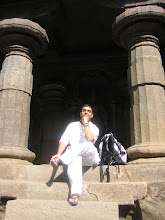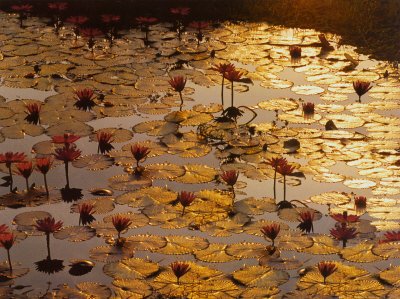Introduction.
Shakespeare’s classic, “Romeo and Juliet”, Juliet says to Romeo:
“What's in a name? that which we call a roseThere’s just something about flowers and their beauty that transcends language and culture, as Juliet alludes to. Flowers as are as common to the human experience as they are in nature. Comparisons to flowers, in all their various incarnations, are ubiquitous in art, literature, science, philosophy, and religion. It’s no surprise then, to find flowers as a prominent symbol within the Buddhadharma. One of the most common flower-related words found in the ancient texts is mālā.
By any other name would smell as sweet;” (1)
Mālā (pronounced maalaa) is a Pali/Sanskrit word meaning “wreath, garland, or chaplet” (2). In popular spiritual usage, it refers to stringed prayer beads. A full discussion of prayer beads covering their origin, usage, and varieties is far beyond the scope of this thread. It is however, worth mentioning that prayer beads are found in many other traditions including Hinduism (where they originated), Islam, Christianity, Sikhism, and the Bahai Faith.
The word ‘mālā’ appears in a famous verse from the Dhammapada (3). The chapter that this verse comes from is, appropriately enough, entitled Pupphavagga (Flower Chapter; puppha = flower) (4).
Yathā'pi puppha rāsimhāA specific flower that is synonymous with the Dharmic religions is the lotus flower. The Pali word for lotus is paduma (5), while the Sanskrit is the more familiar padma (6). Particularly in India, lotuses have long been regarded as symbols of purity and perseverance. Growing from muddy, opaque pools of water, lotuses rise up and blossom into beautiful flowers. Lotus flowers have the ability to remaining clean, with dust and water being unable to stick to the petals. The scientific explanation for this phenomenon is called “superhydrophocity” but is also more conveniently known as the "Lotus Effect" (7).
kayirā mālāgune bahū
Evaṁ jātena maccena
kattabbam kusalam bahum.
“Just as from a heap of flowers,
Many garlands can be made,
So, you, with your mortal life,
Should do many skillful things”.
Dhp Ch. 4, v. 53
One of the earliest references to the lotus occurs in the Sutta 26 of the Majjhima Nikaya (8). In this sutta, called “The Noble Search” (Pali: Ariyapariyesana), the Buddha recounts his spiritual quest as well as the time immediately after his enlightenment. According to this sutta, just after his enlightenment, the Buddha was initially hesitant to teach the Way of Awakening because he wasn’t sure if people could understand it. He says:
"Just then these verses, unspoken in the past, unheard before, occurred to me:At this point, a cosmic being name Sahampati, who comes from the “highest” realm of existence, the Brahma realm, appeared before the Buddha. Sahampati exhorted him to teach, concluding with the lines:
'Enough now with teaching
what
only with difficulty
I reached.
This Dhamma is not easily realized
by those overcome
with aversion & passion.
What is abstruse, subtle,
deep,
hard to see,
going against the flow —
those delighting in passion,
cloaked in the mass of darkness,
won't see.'
Rise up, hero, victor in battle!The Buddha (thankfully) decided to teach the world the to liberation. He then compared the different stages of living beings to lotuses:
O Teacher, wander without debt in the world.
Teach the Dhamma, O Blessed One:
There will be those who will understand.
"Then, having understood Brahma's invitation, out of compassion for beings, I surveyed the world with the eye of an Awakened One. As I did so, I saw beings with little dust in their eyes and those with much, those with keen faculties and those with dull, those with good attributes and those with bad, those easy to teach and those hard, some of them seeing disgrace & danger in the other world. Just as in a pond of blue or red or white lotuses, some lotuses — born & growing in the water — might flourish while immersed in the water, without rising up from the water; some might stand at an even level with the water; while some might rise up from the water and stand without being smeared by the water — so too, surveying the world with the eye of an Awakened One, I saw beings with little dust in their eyes [as above]…some of them seeing disgrace & danger in the other world.Finally, no discussion of flower symbolism in the Buddhadharma would be complete without a mention of the Avataṁaka Sutra (Devanāgari: अवतंसक सूत्र). Avataṁasaka (pronounced ‘uh-vuh-tum-saka’) means ‘wreath’ or ‘ring-shaped adornment’ (9) and is usually translated as “Flower Adornment/Ornament”. This scripture is known as the “King of the Sutras” not only for length (~1600 pages for the complete English translation) but also for the range of practices, ideas, stories, and teachings it conveys. As expected, it is full of flower analogies. One such example occurs in the fifth chapter of the sutra, entitled, “The Flower Bank of the World” (10). Here, the Bodhisattva Samantabhadra (English: Univerally Good or Universal Worthy) is praising the origin of all Buddhas: Bodhisattva Vows. This is not a surprise considering that Samantabhadra is the bodhisattva known as foremost in the practice of Great Vows. Invoking imagery that the Avataṁaka Sutra is so well known for, he says:
That ground is level and utterly pure,Sarvamangalam!
Firmly abiding, indestructible;
It is adorned with jewels everywhere,
With various gemstones interspersed.
The diamond earth is most delightful,
Embellished with jewel rings and nets,
Spread with lotus blossoms in full bloom,
With exquisite raiment covering all.
Enlightening beings’ celestial crowns and jewel necklaces
Are spread all over the ground as decoration;
Sandalwood-scented jewels are strewn about,
All radiating pure, exquisite light.
Jewel flowers flame, producing subtle light;
Flames of light, like clouds, illuminate all.
These flowers, and myriad jewels,
Are strewn over the ground for adornment.
Dense clouds rise and fill the ten directions
With tremendous rays of light that have no end,
Reaching all lands in the ten directions
Expounding the Buddha’s vivifying teaching.
All the Buddha’s vows are in the jewels
Revealing boundless, vast eons;
What the Supreme Knower did in days gone by
Is all seen within these jewels.
Into all the jewels of this ground
Come and enter all the Buddha-fields-
And into each atom of those Buddha-fields
Also enter all lands.
In the Flower Bank world, adorned with wondrous jewels
Enlightening beings travel throughout the ten directions,
Expounding the universal vows of the Great Hero:
This is their power of freedom in enlightenment sites.
The ground arrayed with beautiful precious stones
Radiates pure light replete with all adornments
Filling the cosmos, equal to space;
Buddha’s power naturally manifest like this.
Those who master the vows of universal good,
Those of great knowledge who enter the Buddha’s realm,
Can know, in this ocean of lands,
All such mystic transformations as these.
***
(1) William Shakespeare, “Romeo and Juliet”, Act 2, Scene 2: http://shakespeare.mit.edu/romeo_juliet/romeo_juliet.2.2.html
From ‘The Complete Works of William Shakespeare’ @ MIT (http://shakespeare.mit.edu/)
(2) Pali Text Society's Pali-English Dictionary Online p. 530. Accessed via the "Digital Dictionaries of South Asia" Project. http://dsal.uchicago.edu/dictionaries
(3) Gil Fronsdal’s translation of “The Dhammapada”, p 14. Shambhala 2005
(4) Pali Text Society's Pali-English Dictionary Online p. 467. Accessed via the "Digital Dictionaries of South Asia" Project. http://dsal.uchicago.edu/dictionaries
(5) Ibid, p. 410
(6) Monier-Williams Sanskrit-English Dictionary, p. 584 Motilal, 2005 reprint,
(7) Wikipedia has a good write-up on the Lotus Effect as well as references to the scientific research papers: http://en.wikipedia.org/wiki/Lotus_effect
(8) Arthur Anthony Macdonell. ‘A Practical Sanskrit Dictionary’. p.29. Oxford University Press, 1929. Accessed via the "Digital Dictionaries of South Asia" Project. http://dsal.uchicago.edu/dictionaries
(9) ‘The Noble Search’ Ariyapariyesana Sutta, from ‘Access to Insight’ http://www.accesstoinsight.org/tipitaka/mn/mn.026.than.html
(10) Thomas Cleary’s full translation of the “Avatamsaka Sutra (Flower Ornament Scripture)”, pp. 205-206, Shambhala 1993.








No comments:
Post a Comment